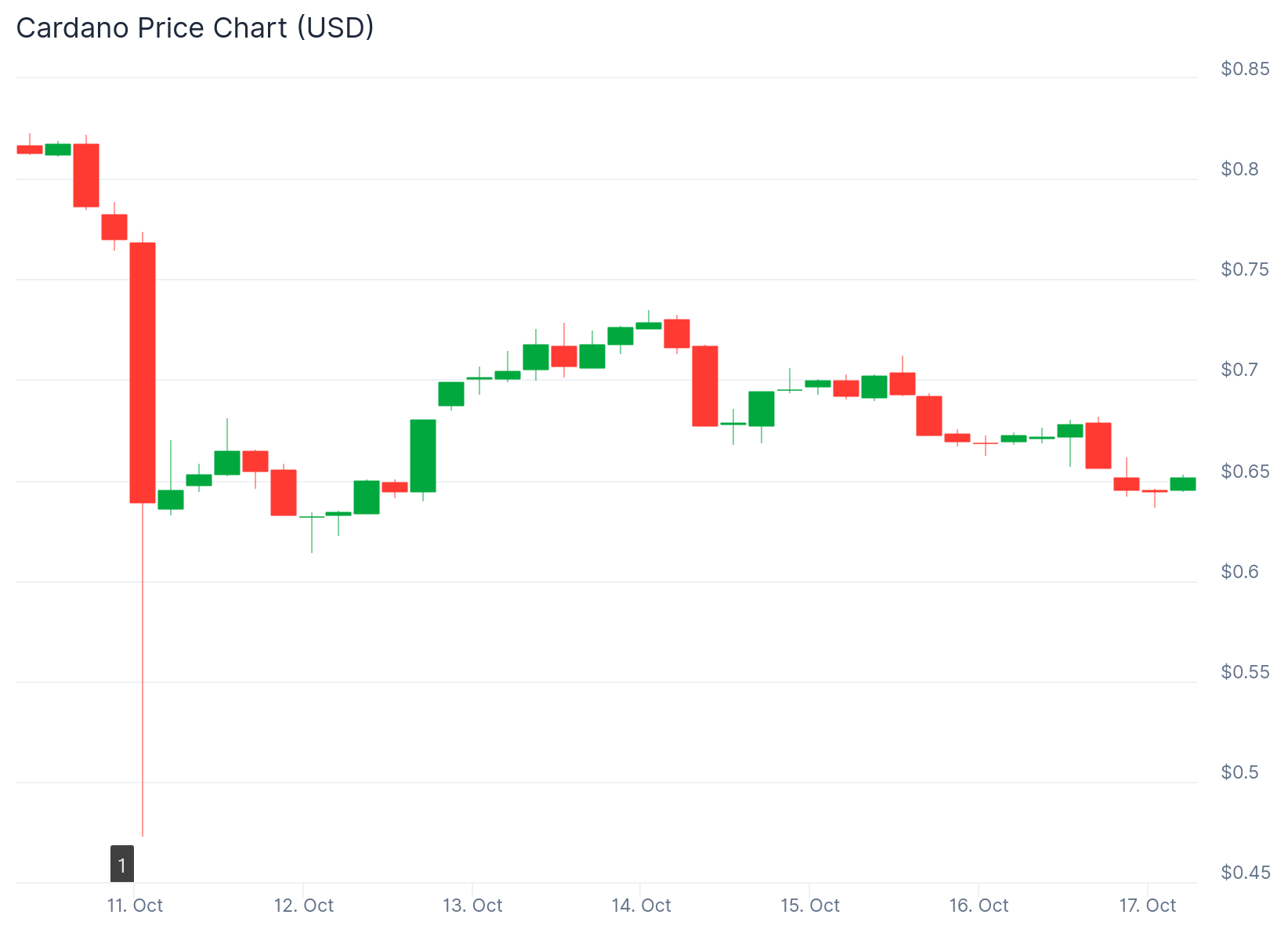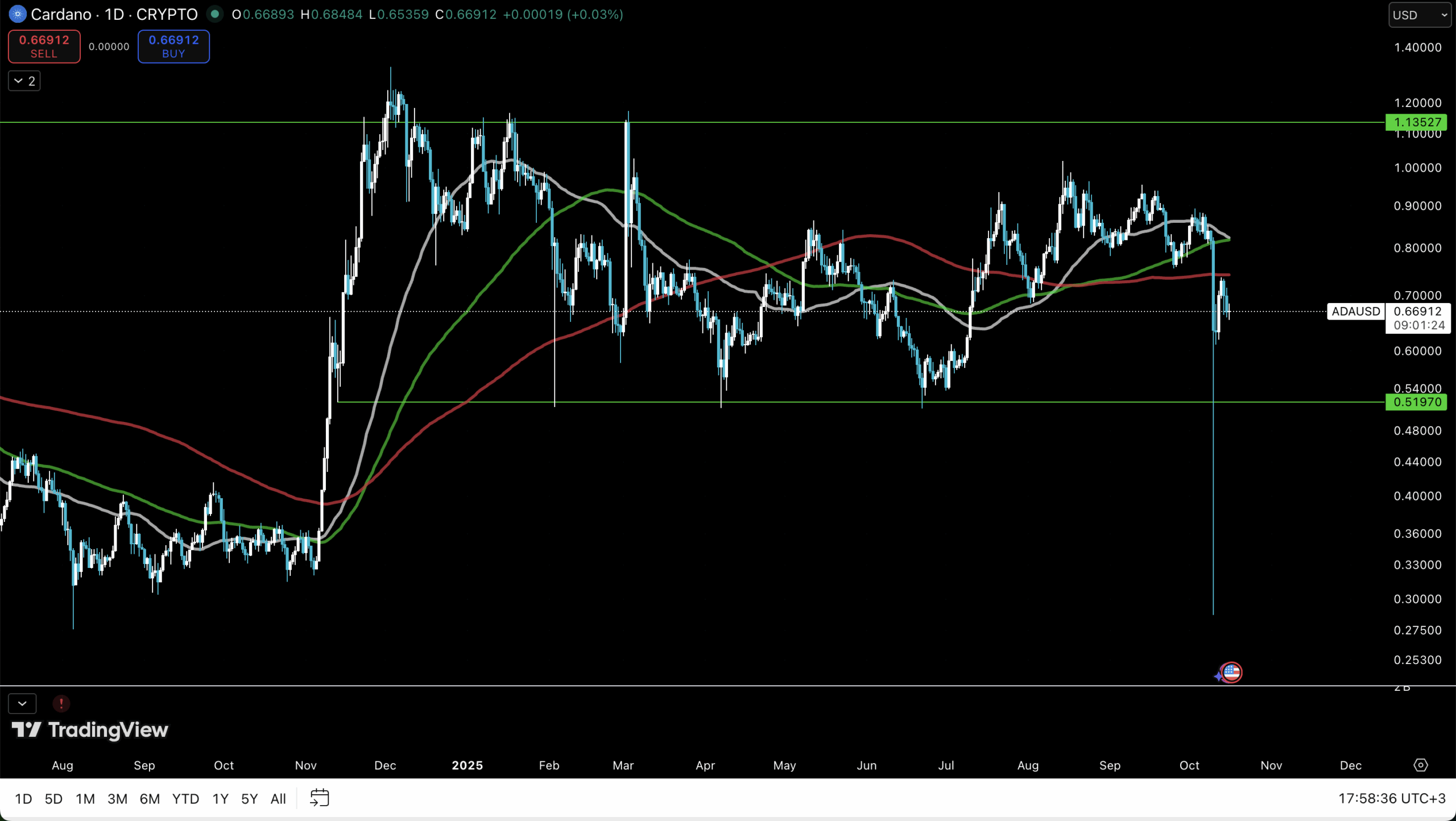TLDR
- Cardano’s treasury holds 1.6 billion ADA tokens worth approximately $1 billion, funded entirely through network fees and staking rewards
- ADA trades at $0.67 with a 3.5% daily decline, 18% weekly drop, and 22% monthly loss from $3.10 all-time high
- Project Catalyst governance allows community members to vote on funding allocations for development projects
- Technical charts show ADA ranging below $1 for one year with key resistance at $1.13
- The self-funding model eliminates reliance on venture capital while maintaining development budgets
Cardano’s community treasury has accumulated 1.6 billion ADA tokens valued near $1 billion. The achievement demonstrates the network’s ability to fund development without external investors.
Cardano price currently sits around $0.67. The token declined 3.5% in the last 24 hours. Weekly losses reached 18% while monthly drops hit 22%. The all-time high stands at $3.10.

The treasury grows through built-in protocol mechanics. Block rewards split between stake pools, delegators, and the treasury. Transaction fees add another revenue stream. This system creates sustainable funding from network activity.
The model differs from traditional blockchain projects that rely on venture capital. Cardano generates cash flow through actual usage. On-chain data confirms the treasury balance increases as network activity continues.
Community Governance Through Project Catalyst
Token holders control fund allocation through voting. The Project Catalyst system manages proposals and selections. Community members submit funding requests for various projects.
The process covers research, tooling, wallets, education, and applications. Smaller development teams gain access to resources through this system. Every allocation creates a public record of milestones and deliverables.
Governance aligns incentives between users, infrastructure teams, and developers. The transparent process helps observers evaluate spending efficiency. Successful proposals convert treasury assets into working products.
The funding approach avoids additional token issuance for operations. Lower supply pressure helps support price levels. The treasury receives its portion from existing tokenomics schedules.
Technical Analysis and Market Position
Monthly charts show price action maintaining above the 50-period moving average. Resistance appears at $1.13, a former support level. Breaking this barrier would open a path toward the previous all-time high.

Daily timeframes reveal year-long range trading. ADA sits below all major moving averages. Recent liquidation events created long downward wicks. Support currently forms around $0.63.
The 4-hour chart highlights the question facing traders. Will support hold at $0.63 or will price retest $0.52? The coin fell below moving averages before the recent decline.
Against Bitcoin, ADA trades near range lows. Historical patterns from 2018 and 2021 show potential for upward movement. The ADA/BTC pair could test range highs if conditions align.
Cardano operates on proof-of-stake consensus. Stake pools validate blocks and earn rewards. Delegators assign ADA to pools and share earnings. This structure distributes incentives throughout the ecosystem.
The network’s fully diluted valuation equals $30 billion. Total supply reaches 45 billion tokens. Currently, 36 billion tokens circulate in the market.
Fees remain low for individual users but accumulate at scale. Higher network activity increases fee generation and treasury growth. This connection ties usage directly to development capacity.
The treasury model creates multi-year planning capability. Projects can receive funding without timing market cycles. Delivery of funded work can drive transactions, which refills the treasury pool.
Observers track allocation pace versus inflows. Steady proposal funding indicates efficient pipelines. Post-funding delivery builds market confidence. Voter participation rates reflect governance legitimacy.



